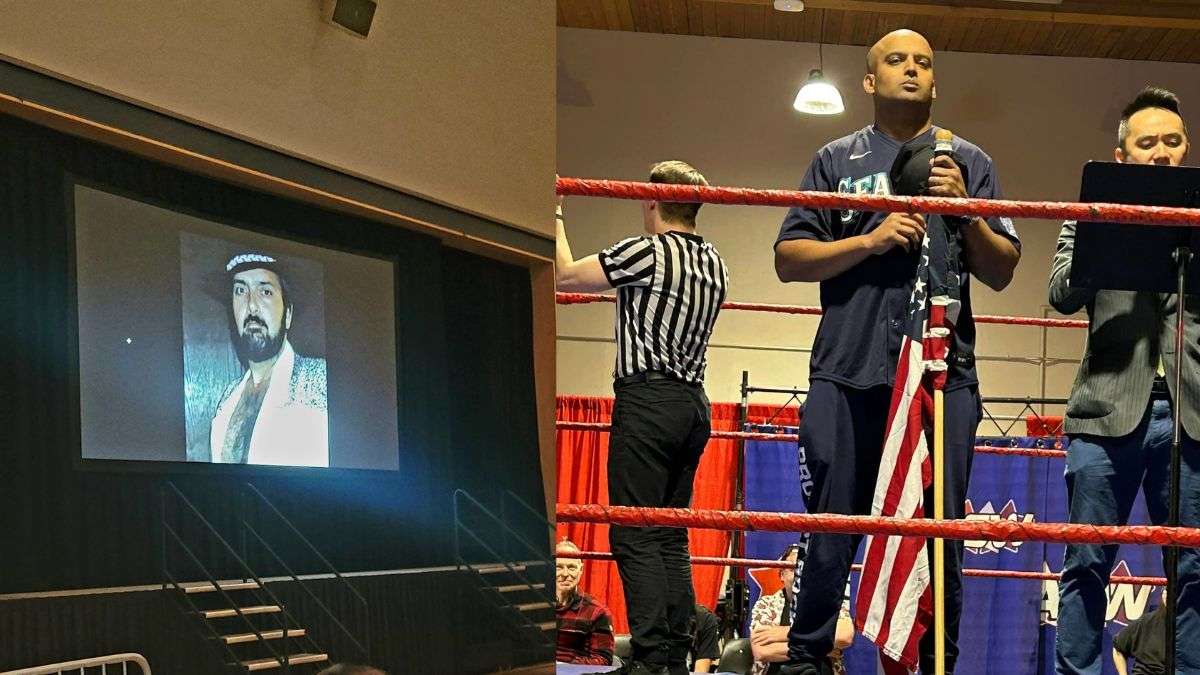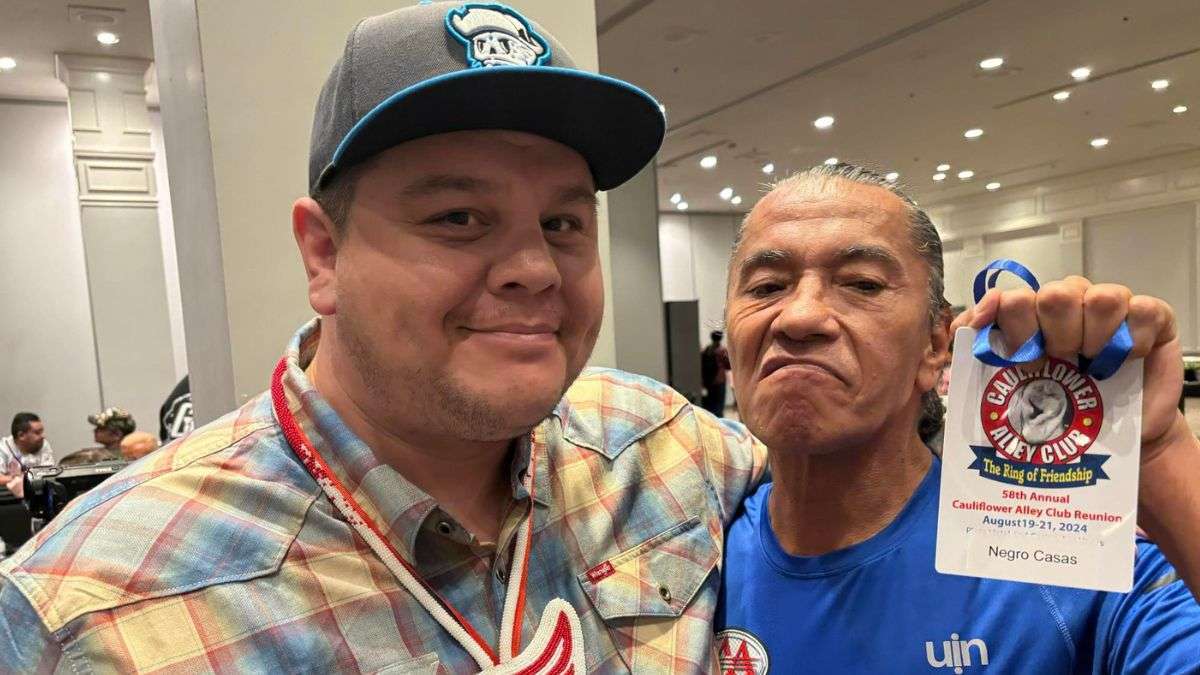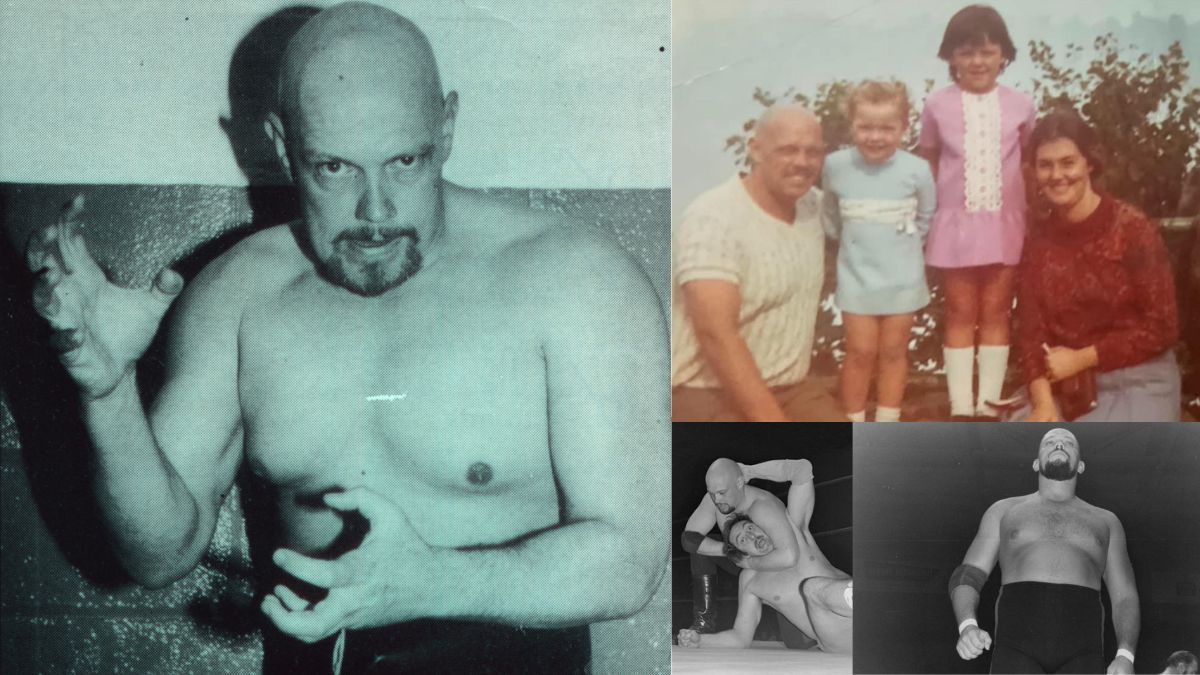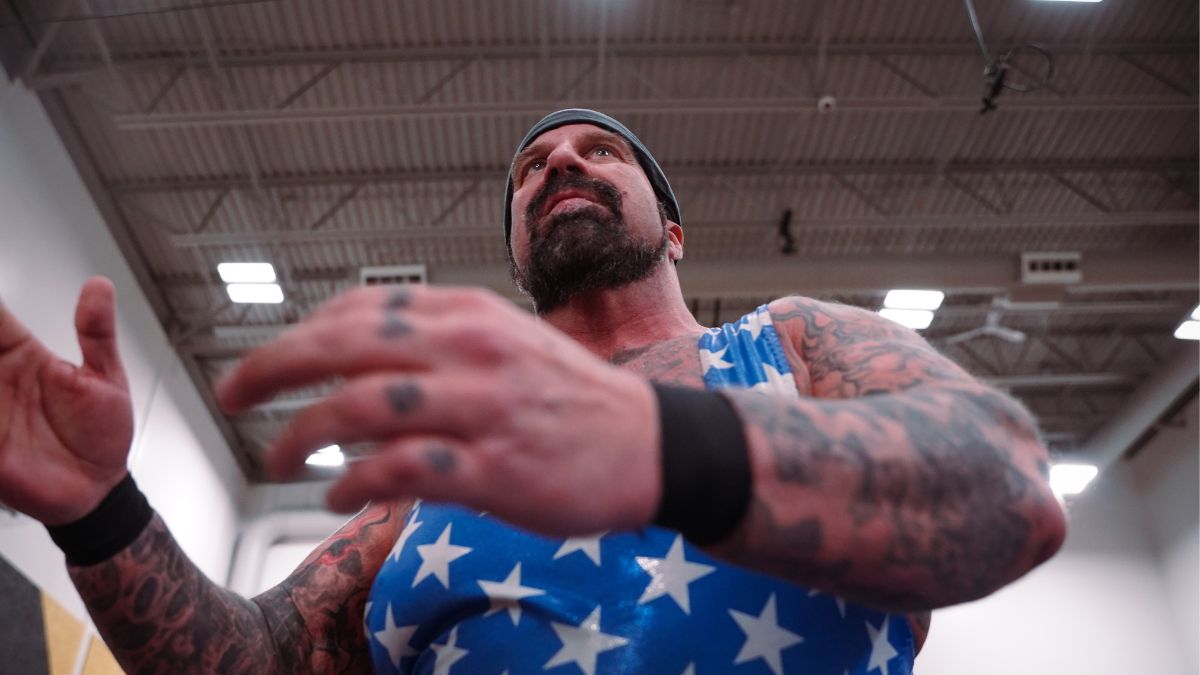I’m a little fired up today! I’m troubled with some of the things that I see in this business and perhaps more disturbed by things that I see online.
I broke into the business in 1993 for River City Wrestling in Winnipeg, Manitoba. At that time, there were a number of veterans in the locker room — both as regulars on the crew, and others who popped in from time time between trips elsewhere; guys like Sgt. Tom Steele, Rick Patterson (aka Leatherface), Mike Stone, Doug McColl, and Eddie Watts. Very early on, respect for THE BUSINESS of wrestling was ingrained. It wasn’t about the “strength of my character” to build a fan following to the show — it was how well you could make the ticket buyers believe in the show as a whole. Whether you were the opening match or the main event — you had a spot on the card, and a role to play in the overall success of the company.
Let’s face it, with very few exceptions on the Canadian independents today, events aren’t selling out based on any ONE active Canadian independent wrestler. In some cases, people are coming out to see a feature match … but most often, it’s the whole assorted cast — the whole scheme of high flying matches, tag team stuff, the heavyweights, the girls, the midgets — the whole show that’s putting fans in seats. Independent wrestling is much like the circus — you might have a favorite event, but you buy a ticket for the whole show and you sit through it all. Even if you saw the circus last year, you’ll probably still go again (even though they have the exact same acts as last time — with the same finishes).
I’ve ranted on this topic before, but I think it’s one that merits repeating. If wrestling, as a business, expects to reach the levels of success that it had decades ago — it starts with the talent themselves. It’s not enough to sit back and criticize promoters and say “Houses are down because this guy doesn’t know how to promote worth shit.” Give it a try yourself some time and see how easy it is. Only then, will you realize how much work is involved and how frustrating it is to invest thousands of dollars in advertising, insurance, building rentals, and performer salaries … only to promote a bunch of talent that isn’t drawing to a level to justify the effort. If a promoter books a talent, advertises them, promotes the card, and the show doesn’t draw — is it now the promoter’s fault? Or is it the fault of the talent? It’s not the promoter’s face on that poster — it’s the talent. So what has that talent done to help draw the house?
Think you’re a draw? Really? I challenge you to walk down the main corridor in the nearest shopping mall to a venue where you regularly appear and see how many times you get STOPPED for an autograph. Do this on the day of the event, or the day after. See how many times you get recognized … I dare say that you can probably do all of your window shopping unharrassed. Way to go, Superstar!
As wrestlers, think about what you have done to help the company(ies) that you work for. Did you provide the promoter with promotional photos and a compelling bio that he could distribute to the local media? Did you make yourself available for interviews with the local radio station or newspaper? Did you show up early enough in the town to make an impression on the local community and let them know that “the wrestlers are in town” (or did you squeak in the back door of the venue at the last minute?). Honestly, what have you done to help the draw? Think of it this way — if it’s your face on the top of that poster and the card fails to draw — everyone will be questioning the promoter about why you have that top spot (and probably making a pitch for themselves to take over).
Being the marquee guy isn’t an ego stroke — it’s a big responsibility. However, ultimately, you’ll get a large piece of the blame if the card doesn’t draw (at least it’s implied), but you’ll get no credit if the card and your match draws the big house. Regardless, you should still do everything that you can to ensure that the promoter feels confident in that investment, and it starts from the moment you know you’re booked.
In recent months, I have ranted about how some of the guys coming up in the business have blatantly disrespected the business and the hard work of the promoters trying to give wrestlers work. Let’s face facts. If you work really hard to get bookings these days, based on the number of bookings available — if you’re really lucky, you might be able to pull down in a YEAR what the guys in the ’80s were doing, schedule-wise in a MONTH! Seriously! Take a look at the schedules — guys were working six and seven days a week. It wasn’t uncommon to see a review of a show in the newspaper, or an interview with one of the wrestlers who was in town — now it’s a rarity.
Don’t believe me? In researching my upcoming book (shameless plug: Watch for Wrestling In The Canadian West coming this Spring) I had an easier time finding information on wrestling in the 1960s and 1970s than I did for the past five years; factual information in print, as covered in the mainstream newspapers. The fact is, nobody is in the news anymore.
I remember my very first day in the business. I hadn’t even appeared in a match yet, but the promoter had decided that I was going to be the new “milk and cookies” fan favorite. About an hour prior to doors officially opening, a curious fan peeked his head into the auditorium and saw the entire roster casually milling about. At that time, I was standing near the top villain (Steele). He immediately uttered “kayfabe” at me and sauntered away. I was a little confused … I was unfamiliar with the word at the time — but it was made clear the importance of protecting the image the company wanted to portray. You rarely see that any more.
The worst example, I think is on “social networking” sites … wrestlers mingling with the general public in an accessible forum — but giving the ticket buyers a look beyond the wrestling realm into “real life” time. Now try to sell tickets to see a heated blood feud between two rivals after you have seen pictures of the two of them drinking beers at a party somewhere. These random candids, while seemingly harmless, do little to promote the larger than life image that wrestling fans have bought in to. You have murdered their ability to suspend disbelief — you’ve let them see too much. You’re not a wrestler anymore, just a guy (or gal) like the ticket buyers. So what’s so special that they should buy a ticket to see that.
There is a time and place for “professional distance.” There is also a distinct time to be fully accessible to the fans, to the promoter, the local media, and/or the sponsors. If wrestling is a BUSINESS — than wrestlers are the PRODUCT. What are you doing to ensure that your product is selling? How are you conducting your business to ensure that the public wants to buy, and in turn, that promoters MUST book you and pay you accordingly?
Sadly, there is a great deal of complacency among the folks that are in the wrestling ranks today. I would say that as few as 10% are actually carrying promotional material with them from show to show. Fewer than that have promotional photos available upon request. If I see promise in a guy and request a portfolio, to pass long to other promoters to encourage further business — I might wait six months for these guys to get on top of that. How does this represent your product? How does this reflect your communicated desire to move ahead in the business?
What is your spot on the card? How is your product best placed on the various shows that are running from coast to coast in the country? Do you know? Have you studied the shows that are operating, spoken to the promoters to find out what they have, what is working for them, and figure out how you best fit? These are all important questions in order to ensure that every booking you take helps to advance your career and is not just “more of the same old, same old”. If you’ve been in one place for more than five years — what’s the next step? Where are you going?
Think about the business of wrestling — respect it. Only then can you started to achieve success.
RELATED LINK




